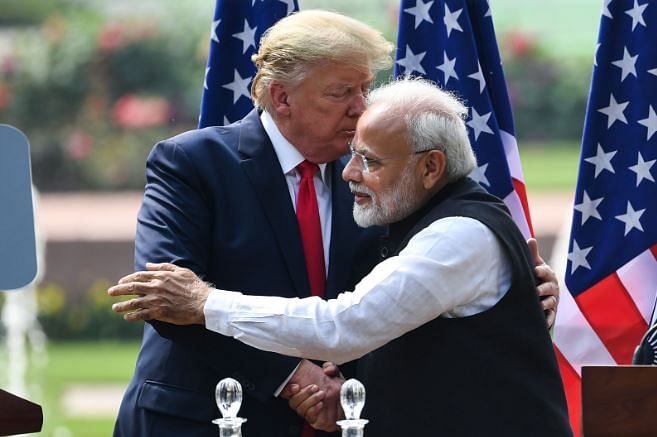
The United States has nudged India to bring down tariffs and adopt a more open policy to lure businesses and take advantage of the moves to lessen the dependence of the global supply chains on China in the post-COVID-19 world.
Even as New Delhi has been trying to dispel the perception that Prime Minister Narendra Modi’s push for “Atmanirbhar Bharat” (Self-reliant India) might lead to protectionism, a senior US diplomat said that the post-COVID-19 environment would offer India “a real moment of opportunity”, but PM Modi’s government should lower tariffs and adopt “more open and welcoming” policies.
“I think what we should focus on, again, in this post-pandemic environment, when countries are looking at a little bit of de-globalization and of onshoring of more of the critical production, at the same time…I think there’s a very vigorous effort to diversify supply chains,” said Alice G Wells, Principal Deputy Assistant Secretary at the Bureau of South and Central Asia at the US State Department. “And, this is a real moment of opportunity for India by adopting more open and welcoming policies, by reducing tariffs that allow manufacturing companies inside of India to be part of a global supply chain.”
The coronavirus was previously unknown before the outbreak began at Wuhan in China in December 2019. The lockdowns enforced by nations to contain the pandemic had a devastating impact on the global economy and fuelled speculation that many international companies might seek to diversify global supply chains to lessen reliance on China.
Wells hinted during an online interaction with journalists that President Donald Trump’s administration in Washington D.C. would like to see the US companies prefer India while moving out of China in the post-COVID-19 scenario, but the Modi government should ensure a level-playing field for them.
“It’s a real moment of opportunity for us (India and the US) to create trusted supply chain relationships with one another” added the senior US diplomat, who is set to retire by the end of this month after overseeing America’s relations with South Asian and Central Asian nations for the past three years.
She reiterated that the US remained concerned as India continued to be “a quite protected market” that could be difficult and sometimes did “not provide a level playing field for foreign companies”.
Wells, however, said that she could not predict whether the proposed trade deal between India and the US could be inked this year, but added that the “impetus” for concluding the pact was “very much present”
India-US bilateral trade has been growing at an average rate of 10% year-on-year and grew from $100 billion in 2014 to $160 billion in 2019. But ever since Trump took over as American President in January 2017, he, himself, as well as other officials of his administration have been complaining that the although the US was India's largest export market and accounted for about 20% of its total export, India was only the 13th largest export market of the US, “due to overly restrictive market access barriers”. A limited-scope trade deal was expected to be among the big-ticket deliverables of the US President's visit to India last February, but it had to be taken off the table for now as negotiators led by Commerce Minister Piyush Goyal and US Trade Representative Robert Lighthizer failed to narrow differences between the two sides. Modi and Trump, however, agreed to add a legal framework to the understanding the interlocutors of India and the US reached so far as well as to try to work out a “bigger trade deal” in the future.
